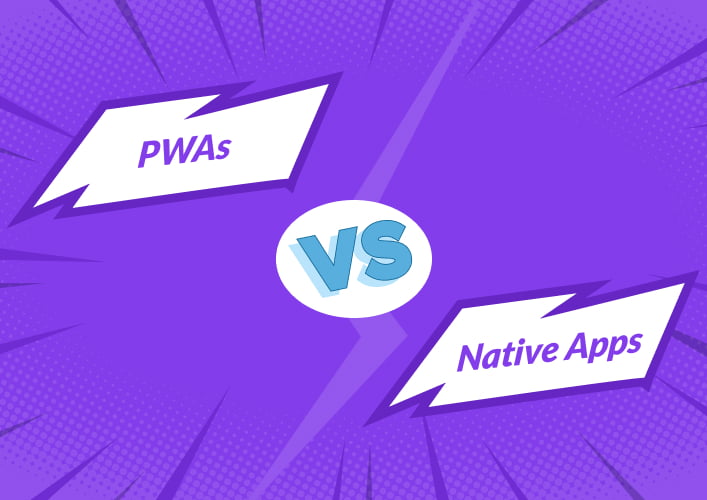How to define Progressive Web Apps?
PWAs are apps developed using web-based technologies that can be downloaded and executed on any device using only a single codebase. It gives a native experience to the users. They operate in internet browsers similar to websites and adjust to the features of the user’s device.
As said by Google, the user experience of progressive web apps is fast, engaging and reliable. Even under unexpected network circumstances, PWAs load quickly and never seem to be down. Furthermore, it easily adapts to the user’s input, has fluid animations, and allows smooth scrolling. It’s easy to use and has the feel of a native app.
Using cutting-edge tools, progressive web apps successfully combine the features of web apps and mobile apps. The future will likely be dominated by progressive web application development. They are well suited to the needs of enterprises looking to optimize user experiences in terms of cost, features & functionalities, development time, and more.
Many companies have developed PWAs to expand into new areas and provide a better experience for existing customers. Some examples of leading companies using progressive web apps are BMW, Starbucks, MakeMyTrip, Pinterest, etc.
Why develop Progressive Web Apps?
There are numerous reasons that make progressive web app development beneficial for you. I hope the following reasons will clear things up a little for you.
- Since PWAs adapt to the user’s device, they are responsive and accessible from any screen size. Thus, they provide fast responses to the users. Additionally, scrolling through PWAs is a smooth experience with better user-app interaction.
- Furthermore, there are still 3% of the global population uses a 2G network and 7% uses a 3G network. Therefore, one can depend on Progressive Web Apps even when the network is poor since they may operate without an internet connection. This is just because PWA uses cached information to load quickly. Thus, it works flawlessly on both networks.
- They are also secure to use as the data is sent through HTTPS and is encrypted.
- PWAs are almost indistinguishable from native apps. After all, a PWA has the same look and feel as a native app and offers the same features and functionalities. For example, push notifications, system integration, etc. The user experience is quite similar to that of a native app. Additionally, they are lightweight and smaller than native apps.
- Furthermore, users may start using the improved version as soon as you release it on your end since there are no app stores as mediator.
- PWA increases user engagement due to push notifications and user-friendliness.
How to differentiate between PWAs and Native apps?

Here’s how you can distinguish between PWAs and Native apps.
- Because of their platform-specific nature, iOS and Android native apps can only be downloaded via their own app stores. However, progressive web apps (PWAs) are online programs that may be downloaded through an internet browser on any device and OS.
- PWAs are installed in the same way as native applications, however, instead of downloading them from an app store, users simply add them to their device’s home screen or bookmarks in their web browser.
- To create a native app, programmers often use Swift for Apple’s iOS or Java for the Android operating system. On the other hand, PWAs are built using standard web technologies like HTML, CSS, and JavaScript.
- Furthermore, native applications can only be updated via the app stores, which may be a time-consuming process. PWAs, on the other side, don’t need users to actively seek out and install new versions.
When to develop Progressive Web Apps?
In case, your target audience location has network-related problems or uses 2G or 3G networks then you should go for PWAs. Furthermore, when finance is a problem and you want to develop an app in low cost than native apps then choose PWAs. Furthermore, updating apps and sending them to the app store takes time. If you want to launch updates faster and make them available to users, developing PWAs is advantageous.
Conclusion
PWAs provide ample benefits over regular and native apps. Furthermore, you can develop them at a low cost. There is a brighter future for PWAs in e-commerce too. Book a FREE consultation with us to build progressive web apps for eCommerce.
FAQs
Is PWA still used today?
Is PWA offline or online?
Is PWA safe?
Can PWA store data offline?
Can PWA be used on mobile?
Shivangi is a passionate Copywriter at Alian Software with expertise in technical copywriting. She shares information that is easy to understand regarding business, technology, and trends.